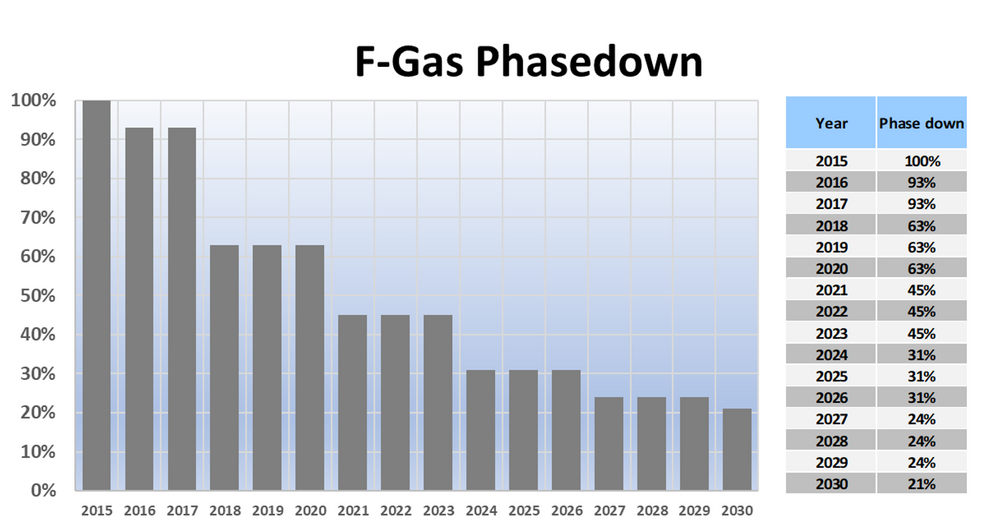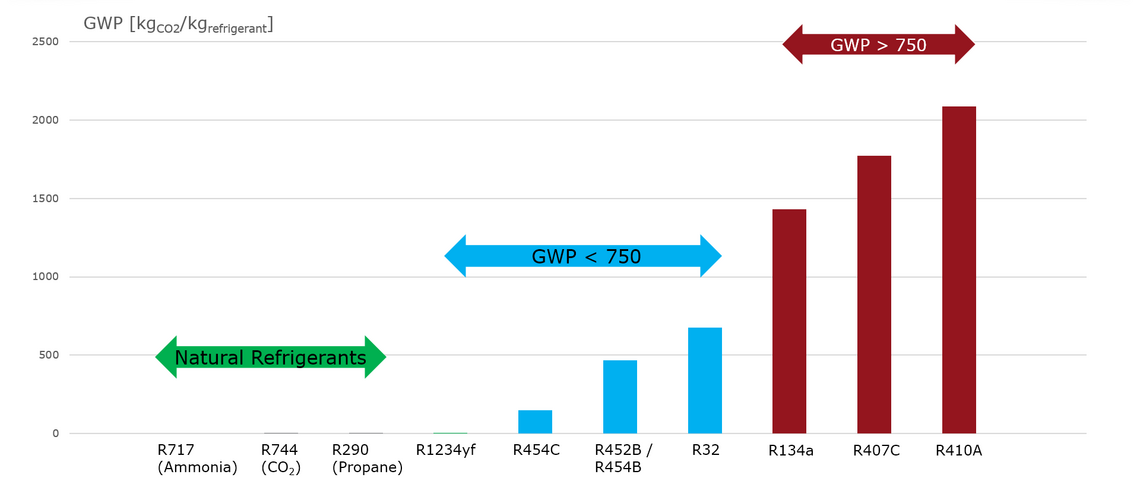Refrigerants
Since 2006, the F-Gas Regulation has had a decisive influence on the use of refrigerants in Europe. The main objective of this regulation is to reduce the F-gases, in particular the associated CO2 emission equivalents. It is not the total mass of refrigerants that is restricted, but rather the CO2 equivalent caused by refrigerants, since the various refrigerants have different major impacts, which are described by the GWP value. Through a quota system, the total GWP contained in refrigerants is to be gradually reduced by 19% by 2030.

In addition to bans on some refrigerants with high GWP, the F-Gas Regulation has led to an increase in the price of refrigerants with high GWP by up to 10 times.
Due to measures such as reduced charge quantities and the use of refrigerants with lower GWP, heat pump manufacturers have significantly reduced the performance-specific GWP influence of the refrigerants. Since the introduction of the HP-Keymark in 2016, the impact has been reduced by more than 60%, as evidenced by the annual new registrations in the HP-Keymark database.
The increasing use of natural and Low-GWP refrigerants shows the trend and sustainability of this development. The following graph shows the high GWP reduction potential of natural and low-GWP refrigerants compared to the refrigerants commonly used for heat pumps to date.

Since 2018, heat pumps using natural or low-GWP refrigerants identified in the HP Keymark have been increasing significantly, contributing to a large reduction in performance-specific GWP impacts.